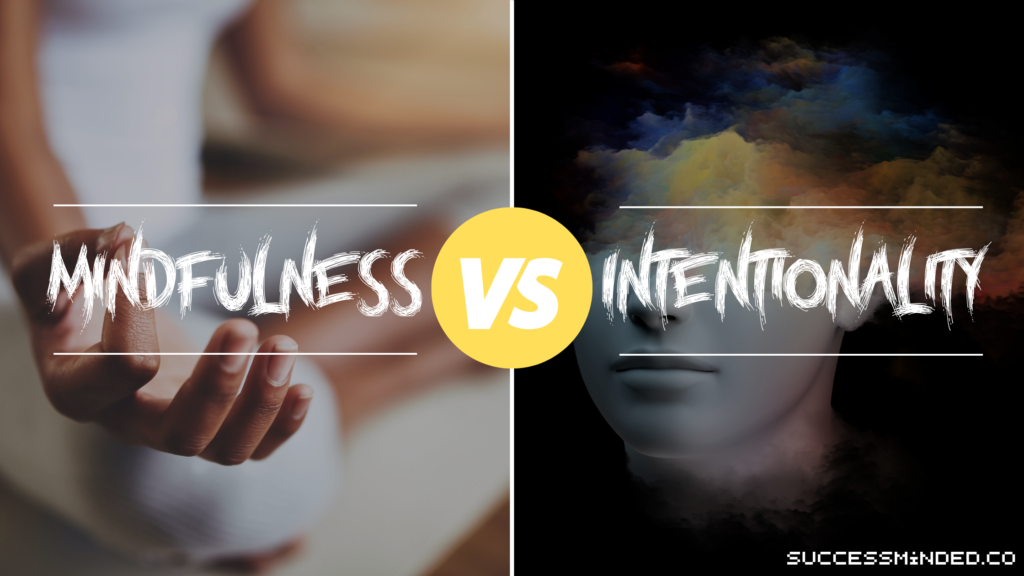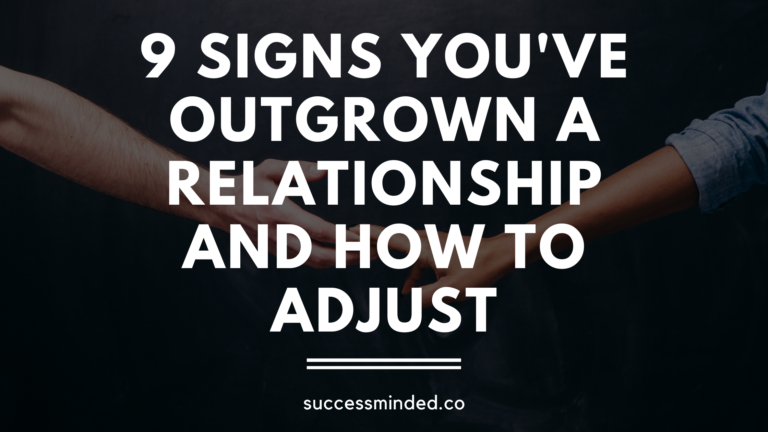Mindfulness and Intentionality –These two terms get used interchangeably quite often. However, though related, they are distinct skills and mindsets with different aims and outcomes.
Understanding the nuances between them allows purposefully cultivating each to maximize their unique benefits.

What is Mindfulness?
Mindfulness involves cultivating nonjudgmental awareness and acceptance of the present moment. Rather than getting caught up in thoughts about the past or future, mindfulness means calmly observing your thoughts, emotions, and physical sensations as they occur.
Research has found mindfulness reduces stress, increases focus, and promotes emotional regulation. The key is openly noticing the present as it unfolds moment to moment rather than trying to change or exert control over your inner experience or external circumstances.
Mindfulness is passive observation without attachment or a need to alter what you find. Imagine sitting beside a river watching the water flow past. You notice leaves, sticks, or debris float by without needing to intervene or direct the water elsewhere.
What is Intentionality?
In contrast, intentionality involves consciously and proactively directing your thoughts and actions toward a specific outcome or goal you want to achieve. Intentionality requires identifying what results you wish to create and deliberately planning and prioritizing steps to accomplish them.
Studies link greater intentionality with increased productivity, self-control, motivation, and life satisfaction. The key is purposefully shaping your thoughts and actions rather than just passively observing whatever enters your mind or reacting habitually.
Intentionality is imposing your desired agenda onto the present moment rather than just accepting what arrives in each new moment. Picture that same river, but now you are intentionally diverting or damming areas to control the water flow based on your aims.
Why They Get Confused

Given both mindfulness and intentionality involve consciously directing your attention, it’s easy to conflate them as near-synonyms. However, critical differences exist.
Mindfulness means nonjudgmental awareness of the now. You openly observe thoughts, feelings, and sensations without needing to change anything. In contrast, intentionality actively tries to alter or leverage the now based on your goals. You impose desires onto the present moment rather than just allowing what arises.
With intentionality, you filter thoughts and actions through the lens of specific outcomes, selectively pursuing certain paths to accomplish aims. Their purposes differ, but people mistakenly lump them together as types of conscious focus.
Key Differences Between Mindfulness and Intentionality
Mindfulness cultivates passive awareness without attachment or an agenda. Intentionality actively harnesses the present moment to pursue predetermined results.
Mindfulness opens you fully to receiving the gifts and lessons of the current moment just as it unfolds. Intentionality seeks to mold the present to achieve desired endpoints.
Mindfulness involves nonjudgmental observation of your thoughts and emotions. Intentionality requires selectively focusing thoughts to complete tasks and produce outcomes.
Mindfulness means relinquishing control and just allowing the richness of each moment to wash over you. Intentionality seeks to control how the present moment unfolds to align with intentions.
When to Use Each
Mindfulness suits unstructured time when aimless observing won’t impede other responsibilities. It shines for handling stress, reducing anxiety, gaining spiritual insight, and practicing unconditional acceptance amidst challenging circumstances.
Alternatively, utilize intentionality when you want to efficiently complete tasks, make discernible progress towards goals, or change unhelpful habits or thought patterns. Intentionality thrives when priorities and desired outcomes are clear.
Mindfulness excels when your aim is simply dwelling in the ambiguity of the present without needing to change anything. Intentionality takes over when conscious effort must be productive and purposeful.
Cultivating Both Mindfulness and Intentionality

Ideally, balance nonjudgmental mindfulness with spurts of timely intentional action. Like yin and yang, mindfulness and intentionality complement each other.
Mindfulness offers calm, clarity, and emotional intelligence to inform how to best direct your intentions. Periodic mindfulness helps ensure your intentions align with your core values and truth rather than ego-driven desires.
Yet intentionality prevents mindfulness from leading to passive complacency. Conscious intentions create forward momentum, while mindfulness provides grounding in the present.
Mastering both mindfulness and intentionality allows fully embracing each moment just as it is, while also mindfully working to shape it for the better. You gain insight to discern when efforts to control life lead to self-created suffering versus when they are necessary and helpful.
Conclusion
In summary, recognize mindfulness and intentionality as distinct skills serving different aims. Regularly practicing both allows fully engaging the present while also purposefully working to direct it when appropriate. With both mindfulness and intentionality in your toolkit, you gain the wisdom to know when to go with the flow and when to intentionally steer.




Pingback: How to Be the Energy You Want to Attract – Success Minded
Pingback: "Every Accomplishment Starts with the Decision to Try" - But Why? – Success Minded
Pingback: Top 25 Controlling People Quotes – Success Minded
Pingback: [How to] Make Your Wants, Want you – Success Minded
Pingback: Spilling Over: What's In Your Cup? – Success Minded
Pingback: 11 Choices That Can Change Your Life Forever – Success Minded
Pingback: How to Adopt the Mindset of "Peace Over Everything" – Success Minded
Pingback: Through Pain Comes Strength – Success Minded
Pingback: Do Things Get Worse Before They Get Better When Manifesting? – Success Minded
Pingback: Support Those Who Support You – Success Minded
Pingback: Life Is Not Just the Passing of Time – It's About Collecting Meaningful Experiences – Success Minded
Pingback: Learn to Sit Back and Observe – Why Overreacting Causes More Harm – Success Minded
Pingback: You Are the Only One Responsible for Your Life and Your Destiny – Success Minded
Pingback: "If You Don't Love Yourself, How in the Hell You Gonna Love Somebody Else?": Lessons from RuPaul's Iconic Message – Success Minded
Pingback: 9 Signs You've Outgrown a Relationship and How to Adjust – Success Minded
Pingback: "What You Think About Is What You Will Bring About": Harnessing the Power of Thoughts – Success Minded
Pingback: Training Your Mind to Be Calm Amidst Times of Crisis Will Serve You Well! – Success Minded
Pingback: A Person's Actions Will Tell You Everything You Need to Know. Pay Attention. – Success Minded